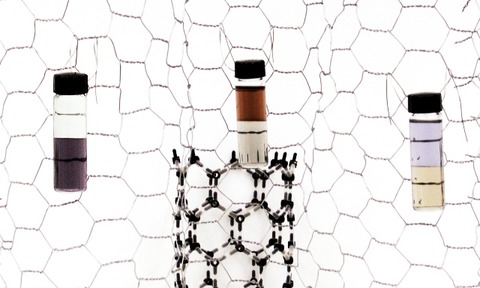Old separation technique outdoes HPLC
2 May 2013

NIST researchers have opted for two-phase extraction over HPLC to separate carbon nanotubes.
Materials scientists at the National Institute of Standards and Technology (NIST) are using two-phase liquid extraction to purify carbon nanotubes.
NIST researcher Constantine Khripin said it was an unusual solution: “It’s an old technique, it was popular in the 70s, but then HPLC replaced a lot of those techniques.”
HPLC is also used by scientists to partition carbon nanotubes but Khripin claims it’s less successful.
The breakthrough was to realise that you need a very subtle difference between the two phases
HPLC divides things by exploiting differences in the mobility of the desired molecules as they travel through small columns loaded with tiny spheres.
However, carbon nanotubes tend to stick to the spheres, reducing yield and eventually clogging the equipment.
The solution NIST opted for was to create a mixture in water using two polymers that are slightly different in their hydrophobicity.
Scientists then added the sample to be separated and stirred vigorously. The polymer solutions gradually separated into two distinct portions, the lighter one on top. They brought with them those molecules in the sample that shared a similar degree of hydrophobicity.
According to NIST, the technique works well with nanotubes because of differences in their electronic structure – the semiconductor forms, for example, are more hydrophobic than the metallic forms.
Khripin said: “People tried this before and it didn’t work. The breakthrough was to realise that you need a very subtle difference between the two phases. The difference in hydrophobity between nanotubes is tiny.”
“This technique uses some vials and a bench-top centrifuge worth a couple hundred dollars, and it takes under a minute,” added team member Jeffrey Fagan.
“The other techniques people use require a HPLC on the order of $50,000 and the yields are relatively low, or an ultracentrifuge that takes 12 to 20 hours to separate out the different metals from semiconductors, and it’s tricky and cumbersome.”
The nanotube metrology project at NIST is hoping to find new and cheaper ways to separate nanotubes for industry to use in the development of nanoelectronics and other applications.
“We really think we have a method here that fits all the criteria that people are looking for,” said team member Ming Zheng. “It’s easy, it’s scalable, it’s high resolution – all the good attributes put together.”

